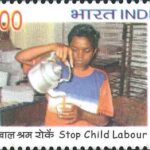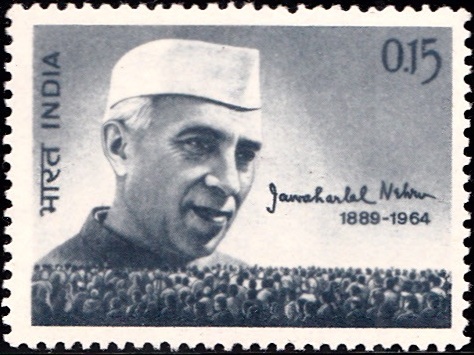
India on Children’s Day 1997
A special postage stamp on National Children’s Day 1997 :
 Issued by India
Issued by India
Issued on Nov 14, 1997
Issued for : The Department of Posts is happy to be associated with the observance of his special day by issuing a special postage stamp on this day every year. As we celebrate the 50th anniversary of India’s independence, the Department of Posts is also proud to pay homage to Pt. Jawahar Lal Nehru and his contribution to the building of modern India.
Design : The stamp this year depicts Nehru and child focussing on his image as ‘Chacha Nehru‘ and underlining his love and deep commitment to the well-being of children.
The First Day Cover depicts a painting by Shaly Bhattacharya selected from a painting competition conducted among anganwadi children and supplied by the Department of Women and Child Development.
Credits :
Stamp : Press Information Bureau
FDC : Department of Women and Child Development
Type : Stamp, Postal Used
Colour : Multicolour
Denomination : 200 Paise
Overall size : 3.91 x 2.90 cms.
Printing size : 3.55 x 2.54 cms.
Perforation : 13 x 13
Paper : Imported un w/m Adhesive Gravure Coated Stamp Paper in reels 47 cms width
Stamps Printed : 0.7 Million
Number per issue sheet : 35
Printing Process : Photogravure
Printer : India Security Press, Nasik
About :
- 14th November the birth anniversary of India‘s first Prime Minister, Pt. Jawahar Lal Nehru is celebrated every year as the universal children’s day. Panditji love children and his birth anniversary is rightly declared to the children of the country to remind us of what he said : “The process of building men and women depends very considerable on what is done to its children. It is therefore of high importance that we pay attention to the well being and growth of children“.
- Panditji was not only our first Prime Minister but also the builder of modern India. His dream was “to build the house of India‘s future, strong and secure and beautiful …………” (Discovery of India) “…………we have to build the noble mansion of free India where all her children may dwell” (excerpt from speech delivered in the Constituent Assembly on 14th August, 1947). His vision of India was a country with scientific temper, a strong and vibrant economy with an advanced industrial infrastructure. To achieve this grand vision he introduced planning as an instrument of national, economic and social development. A planned approach to child welfare began with formulation of first Five Year Plan and developed into the national policy for children in 1974 laying down the guiding principles for child welfare. The National Policy for Children (1974) described children as “primarily important asset” re-affirming our constitutional obligation to the children, assigning priorities to different needs of children and for responding to those needs in an holistic manner.
- India is a signatory to the world declaration of the survival, protection and development of children. In order to implement the world summit goals, a national plan of action has been prepared by the Department of Women and Child Development, to address health and formal welfare related activities, removal of gender discrimination and special protection for economically, socially and physically disadvantaged groups. In the 50 years since India achieved independence, much has been done to redeem the pledge made to the future generations of India.
- The observance of Children’s Day helps us to renew our commitment to our social and moral responsibilities towards the need and right of the children.
- Text : India‘s Struggle for Independence; Discovery of India.







